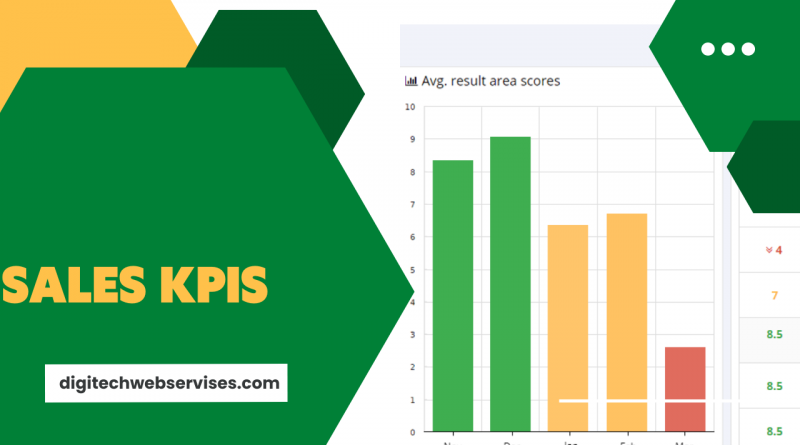Sales KPIs: know the top 7 and how to use them
One of the pillars of the success of a business is its administration. Knowing how your company’s performance is going is essential to create effective strategies and work on what really works. With professionals focused on converting market opportunities, the best allies are sales KPIs. They show, […]
One of the pillars of the success of a business is its administration. Knowing how your company’s performance is going is essential to create effective strategies and work on what really works.
With professionals focused on converting market opportunities, the best allies are sales KPIs. They accurately show the result of each action taken and the consequences on the business.
If you want to know more about sales KPIs and how to use them in your business, accompany this post.
We are going to show you the main 7 and how they can be applied in your company.
The Importance of Sales KPIs
Table of Contents
How do you control the numbers of your company? Do you have an extensive list of indicators or do you simply prefer not to accompany them?
Some entrepreneurs have the idea of accompanying all the numbers generated by the company, in a systematic way, almost as an obsession. This is not necessary. Actually, it’s not the way to go!
Maintaining a high number of indicators can cause great confusion, in addition to spending time with little or no relevant data. In that sense, you should be concerned only with the essential indicators, the KPIs.
Key Performance Indicator (KPI or key performance indicator, in Spanish) is the metric used to monitor the performance of your business. Each company defines its KPIs and the rule is to discover what is directly influencing the objectives set.
For sales, good examples of KPIs are:
- number of leads generated;
- number of qualified leads;
- conversion rate;
- Average ticket;
- CAC (cost of customer acquisition);
- number of completed businesses;
- sales cycle .
To make each KPI clear we are going to show them separately and teach you how to apply them.
Top 7 sales KPIs
1. Number of leads generated
Leads are potential customers, those who are interested in the solution offered by your company. These must be captured and converted into clients.
Recalling the sales funnel , it is interesting to highlight the number of leads generated as one of the sales indicators to evaluate the performance of marketing actions , the sector responsible for generating opportunities.
With this control, you can see if the actions of the top, middle and bottom of the funnel are being effective, that is, generating a good number of leads for the sales sector .
To control this indicator, you must search for potential customer data, whether it be with the newsletter registration, downloaded content, event registration, among others. This way you will have a list with the data and the total number of leads generated in a certain time.
2. Number of qualified leads
The Buyer´s Journey and the marketing funnel must be built together, in order to create a good way for your potential customers to search for all the necessary information about your products or services offered.
In this way, you will be qualifying the leads, that is, giving them all the necessary knowledge to make the purchase decision.
Investing in lead nutrition is essential for the sales team to maintain a good conversion rate.
During the discovery, knowledge and consideration phases, they will have access to all the data necessary to reach the purchase decision making with the sales team.
To control that indicator, you need to calculate how many potential customers, you and your team, sent them a sales proposal, such as a quote .
3. Conversion rate
The conversion rate is one of the KPIs most important sales. Evaluate the efficiency of your team, relating the number of opportunities generated and those that will in fact become sales.
This indicator makes it possible to identify the best strategies. You can use A / B tests and evaluate the results. Thus, you define with numbers, the actions that must be taken by the sales team.
To calculate the rate, simply divide the number of orders by the number of opportunities generated, then multiply it by 100 to find the result as a percentage.
4. Average ticket
The average ticket is the indicator that shows the behavior of customers with the brand, that is, it shows the average cost per order.
It is one of the main sales KPIs, as it is directly related to the company’s billing. You can devise strategies to increase the average ticket. Some examples are:
- offer progressive discounts;
- free delivery from a certain value;
- create product combos;
- among other.
To measure the average ticket, simply divide the total billing by the number of orders generated.
5. CAC
The cost of customer acquisition (CAC) is another important KPI. As the name itself says, it weighs the entire investment made until a consumer becomes a customer.
To know this indicator, it is necessary to raise all the investment made, from marketing actions to expenses in the sale.
With these data, you must verify how many clients were generated in the period of time studied. Then divide the total investment by the number of new customers.
This indicator allows you to analyze whether or not a certain customer acquisition strategy is worthwhile. Since, if the CAC is greater than the average expense, it means that you are investing more money to get a customer than he is actually spending on the purchase. I mean, danger!
6. Number of completed businesses
It is important to know the number of businesses completed in a certain period for the creation of goals .
It is worth noting that this indicator by itself is not as representative as when it is allied with others – such as the average ticket – and may become even more important for sales strategies .
A good example is comparing two sellers and checking the number of completed businesses and the average ticket.
Perhaps a seller who is concerned with working better on the lead, spending more time with it, can achieve a higher order value.
7. Sales cycle
Our last indicator on the list of top KPIs is the sales cycle. Determine the time it takes for a person to make a purchase from the company from the first contact.
Its importance is in the fact that the shorter the cycle, the more customers can be sought by the team, increasing profit.
If the sales cycle starts to increase a lot, it can mean that the marketing is not very informative, which makes it necessary to nurture the leads in order to reach the purchase decision.
KPIs and increased sales
As we saw in this post, it is very important to create and accompany the main sales KPIs of the business. It is not good to create an extensive list of KPIs. That would only generate a lot of work and little focus.
The first point is to define the business objectives. From there, verify what directly interferes with that objective.
Thinking about the increase in sales, the indicators that we cited allow efforts to be concentrated on techniques that bring better results, increasing the efficiency of the entire team.
In this way, the company grows, becomes a benchmark in the market and professionals achieve the dream of success.



